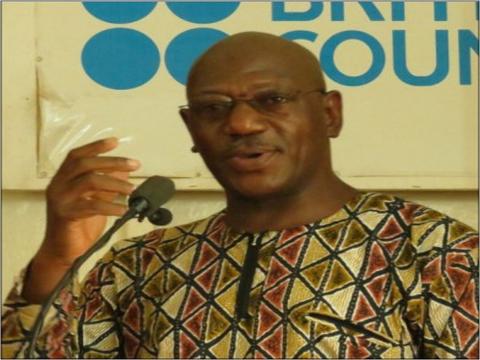By Kemo Cham
In the small conference room in the offices of the civil society organization Campaign For Good Governance (CGG), a group of journalists were recently discussing their experiences covering the Sierra Leone judiciary. This is part of ongoing efforts to reform one of the world's most compromised justice systems.
That discussion is part of a project called Access Sierra Leone, an independent initiative funded by the Partnership for Democratic Change in the United States. A major aspect of it is the 'Bridging the Gap Between the media and the judiciary.
Court reporting is not a fond thing to do as a journalist in Sierra Leone, and the experiences as heard from the narration of these journalists speak it all. They told stories about officials demanding money to access copies of judgments, magistrates asking journalists out of court in select hearings because they did not want them to hear certain revelations.
These journalists' experience is a microcosm of how dysfunctional the whole justice system of the country has become, to the effect that a party in a case would not even know where they should attend hearing, for instance.
There is a huge backlog of cases in the courts, cases as old as decades.
The story becomes even more sorrowful when you look at the effect of this on the correctional system, which has become so overcrowded that they are a cesspit of infections. The recently renamed Sierra Leone Correctional Center in the west end of the capital Freetown, for instance, was built to accommodate 324 inmates. Today it is believed to holding over 1000.
The Access Sierra Leone project was designed to open up the governance system to people to allow for proper scrutiny. It is in two components – one targeting the civil society, and then the media development component which seeks to empower the Fourth Estate to be able to hold public officials accountable through unearthing of corruption and other governance malpractices.
The media development component is also in three folds: The Bridging The Gap; a Law School for Journalists; and a Fellowship programme for journalists.
Bridging the Gap takes the form of round table discussions between journalists and representatives from the judicial sector - private practitioners and state prosecutors. The idea was to have judges and magistrates take part in the discussions. But out of at least three such sessions, none has showed up. The most senior official that has appeared at the discussions is the Master and Registrar of the High Courts. To some of the journalist, this is an illustration of how much seriousness, or the lack of it, they attach to the issue.
But despite this, the project implementers believe the programme is achieving its intended outcome.
Even though magistrates and judges have not been attending, they have been sending in their representatives to the discussions, said Mohamed Kuyateh, Project Manager of the Institute of War and Peace Reporting (IWPR), which is implementing the project.
Kuyateh said the fact that the discussions have been happening is progress in itself.
As part of the Bridging the Gap, the project management team occasionally met with editors from various media institutions, partly to gauge their opinion on the project and get their inputs, but also to assess the impact of the project as manifested in their newsrooms.
According to some of the editors, the meetings were remarkable in not just letting them (journalists) express their views about the judiciary, but also knowing more about what the judiciary thinks about the media.
“We may not be there yet, but the conversation has started, and that’s a major leap,” said Kuyateh.
The Law School for Journalists component involves a mentoring phase. 15 journalists are enrolled after a competitive selection process. They are taught on how to effectively report on the justice system, crime prevention, as well as during courts proceedings. This leg of the five-month long project is due to end this month.
The fellowship component, comprising 15 journalists, 12 of whom are already part of the Law School, provides financial support for them to undertake long form investigative reporting. This process is being run by an international journalism consultant who mentors the reporters.
“In the first instance, for the law school for journalists, journalists actually testified the fact that they have actually gained knowledge from the training. Even the legal aspect of it has encouraged them to further probe into investigative journalism. Most of them had not embarked on proper investigative journalism because of the lack of knowledge therein,” said Kuyateh.
And he added: “With the training we have been having, they are now very much interested in probing into investigative journalism.”
One of the fellows, Success Kamara, is investigating the male correctional system in the country. His work has taken him to the Freetown Correctional Center and the Mafaanta Prison in Magburaka, Tontokolili District in the north of the country.
But like the rest of his colleague fellows, Success faced hurdles while investigating his piece. And that experience, he said, points to the need for serious discussion on the media-judiciary relations.
Nonetheless, the experience of the fellows, as can be deduced from their narrations, is proving rewarding for their skills development in journalism. Ibrahim Joenal Sesay, who works for Salone Times newspaper, had had the wrong idea about what investigative journalism was until he joined the IWPR Law School.
“I thought first we were doing investigative journalism but when we did the training, I realized we were joking,” Sesay said at one of two sessions held in July.
Investigative journalism is an expensive business, and in a country like Sierra Leone, where the media is extremely poor, the focus is far less important to editors. Characterized by small staff base, media houses rely on their reporters for news reports on a daily basis.
© Politico 02/08/16









